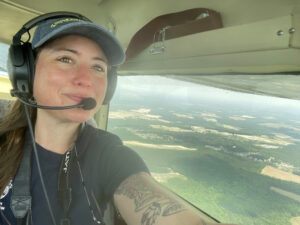CAFOs
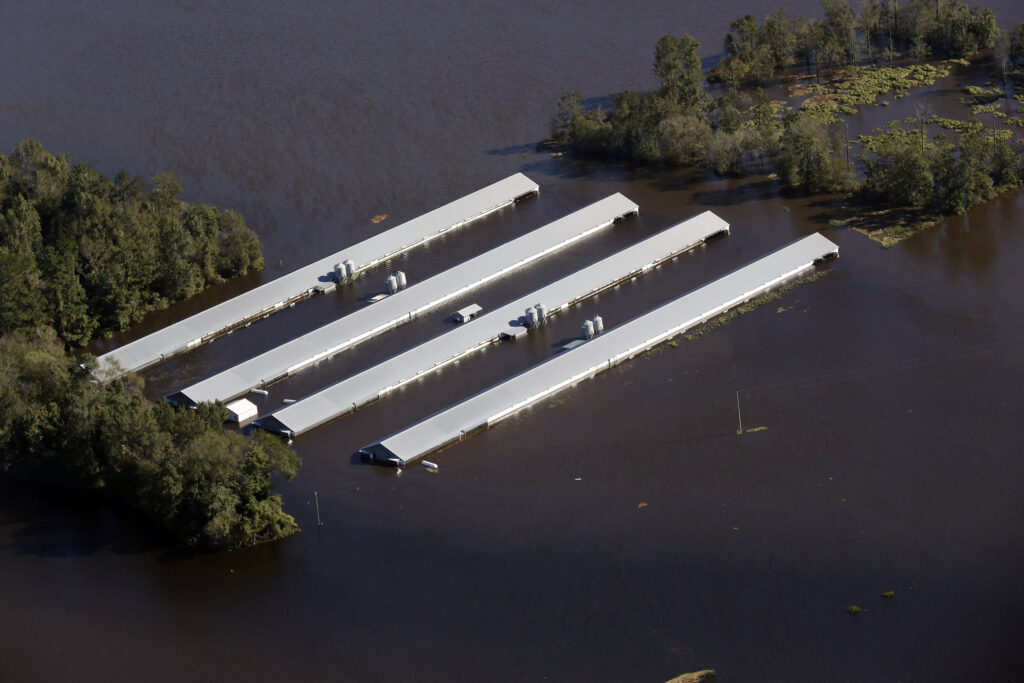
Swine CAFOs
Among the biggest threats to water quality in both watersheds — and particularly in the lower Neuse — is large quantities of nutrient pollution, especially nitrogen and phosphorus. This type of pollution comes from a variety of sources: runoff from large areas that contain fertilizers, animal waste washed from lawns, urban developed areas and farm fields among them.
However, industrial meat production facilities, including swine and poultry facilities housing tens of thousands of animals, contribute most of the excess nitrogen and phosphorous discharging into our rivers and streams.
These facilities are called CAFOs, which stands for concentrated animal feeding operations. In North Carolina, hogs outnumber people in 30 of 100 counties, many of them rural — many of them in the Neuse and, to a lesser extent, the Tar-Pamlico watersheds. Many of them are located near or in disproportionately low-income and communities of color. And some of them are located on the banks of waterways, in eastern North Carolina floodplains.
Where a concentrated number of animals are being housed and fed, the animals are also producing waste — and a lot of it. It’s estimated that hogs put out about 10 billion gallons of waste each year, and that’s just in North Carolina. Hog waste is stored in “lagoons,” some of which are not lined, and waste can, conceivably, make its way into groundwater by soaking through the soil.
The way hog waste is disposed of is by siphoning it from the lagoon into a truck with a sprayer, and spraying the waste onto fields. This, in itself, is problematic. Spraying fields with waste can affect the air quality of neighboring communities — not only creating an awful stench, but airborne particles from this practice have been proven to have a negative impact on human health with consistent exposure. And when it rains, hog waste on fields potentially becomes stormwater runoff from those fields, washing into ditches, streams, creeks and rivers — thus, the excessive nutrients.
Some nutrients like nitrogen and phosphorous can be beneficial to aquatic life in small amounts, but large amounts can contribute to excessive plant growth, algae blooms and low levels of dissolved oxygen in the water. All that often adds up to fish kills, in which hundreds, if not thousands, of fish die and decay and add a bunch of bacteria to the mix. Nobody wants to swim or boat with dead fish. No one wants to eat a fish with sores, either.
Here’s another effect of climate change: heavier rains mean more excess nutrients are washing into the waterways. More frequent tropical storms and hurricanes pose an even greater threat to water quality, as floodwater surrounds or inundates barns full of animals and lagoons full of waste. When that happens, the earthen berms surrounding the hog lagoons may fail, spilling millions of gallons of raw sewage into the waterways, and those heavy rains can fill a lagoon until the combination of rainwater and hog waste spills over the top.
That’s exactly what happened during Hurricane Florence in 2018. In North Carolina, 46 hog waste lagoons were flooded and another 60 spilled over, and all of that waste ended up in the waterways.
Poultry CAFOs
In the past two decades, North Carolina’s poultry industry has exploded.
However, because the industry only reports to the North Carolina Department of Agriculture, there is no public record of how many of these facilities exist or even where they are.
North Carolina’s poultry industry is growing and largely unregulated, which makes it nearly impossible to understand the environmental impact it’s having on our waterways and communities.
Riverkeepers’ only way to determine the number and location of poultry facilities is to cobble together information from limited statements given by state agencies, what’s in the news, and by actually flying over facilities and scouting them out themselves.
Like swine CAFOs, poultry CAFOs produce a lot of waste every year. The method of disposing of poultry waste is to remove the dry litter from the confinement buildings, where it is stored outdoors in large piles before being used locally as fertilizer on pastures and hayfields or shipped out of the area for use as fertilizer elsewhere.
It is when the dry litter — a mix of poultry waste, spilled feed, feathers and material used as bedding — is stored outdoors, particularly if left uncovered, that it poses a threat to water quality.
A good rain on an average day can readily wash dry litter into nearby ditches, streams, creeks and rivers. During a hurricane, it’s much worse. For example, in 2018, 35 poultry facilities in eastern North Carolina were flooded during Hurricane Florence; more than 3.4 million poultry were killed, according to the poultry industry. Considering that each facility holds tens of thousands of birds, that’s an enormous amount of waste poisoning local waterways and aquatic life.
Latest News
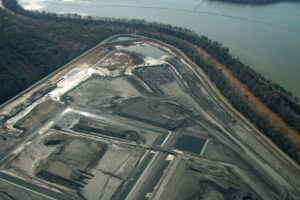
Flight an education on coal ash cleanup
March 14th 2024
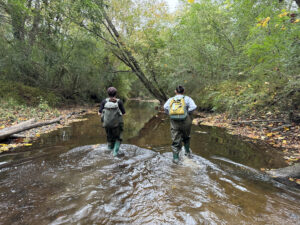
Riverkeeper win: White Oak must close existing hog-waste lagoons
December 14th 2023
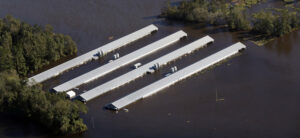
ACTION ALERT: NCDEQ permits need OUR input!
October 26th 2023
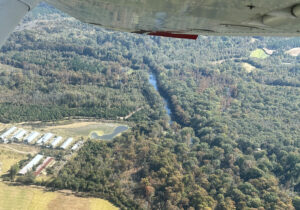
Riverkeeper introduced to aerial investigation
October 26th 2023
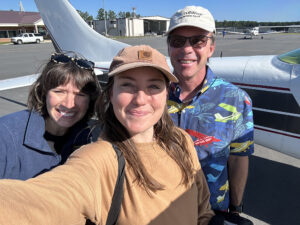
Aerial tour reveals major Neuse pollution threats
October 5th 2023
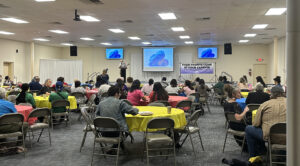
People’s Hearing sets community organizing example
September 21st 2023
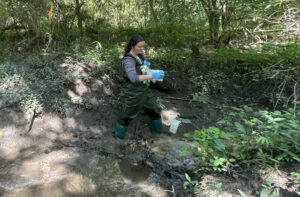
Nahunta Swamp pollution investigation continues
July 27th 2023
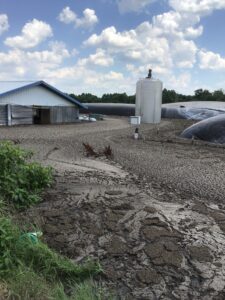
State finds hog facility is polluting waterways
July 20th 2023
